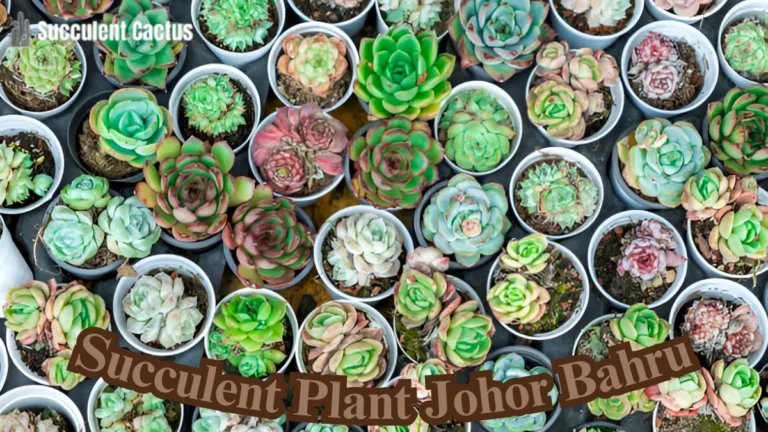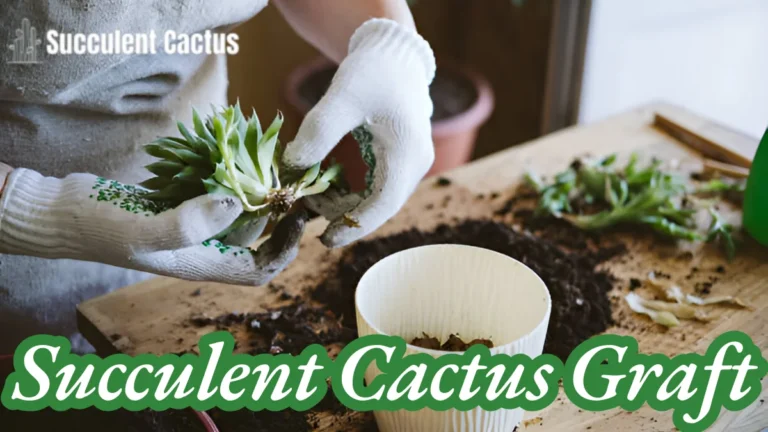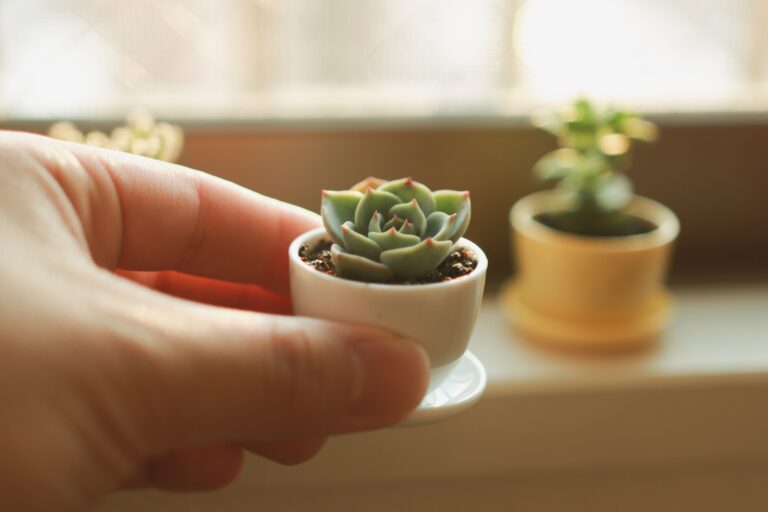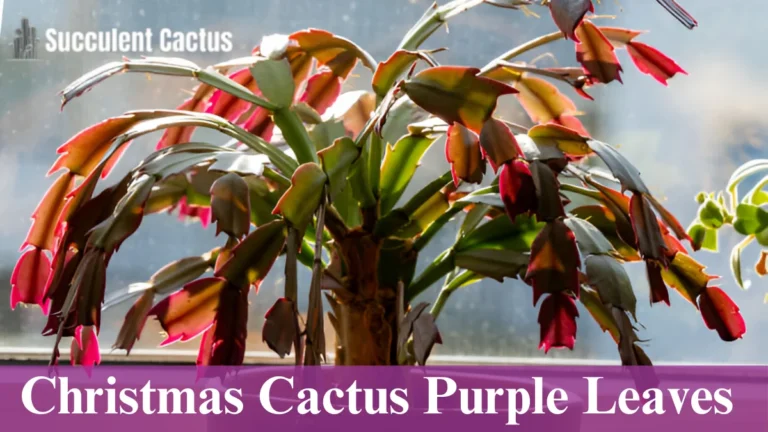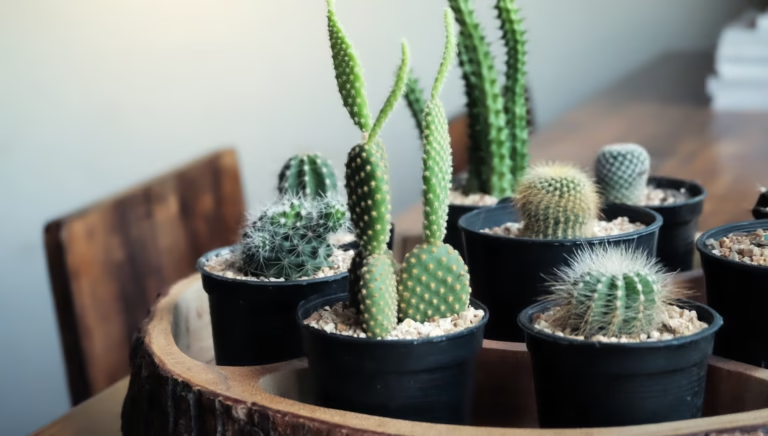The Ultimate Guide to Growing Succulent Cactus Plants from Seeds

Succulent cactus plants are an incredibly popular choice among gardeners due to their unique aesthetic and ability to thrive in arid conditions. Growing these plants from seeds allows for a deeply rewarding experience, offering the chance to watch a plant grow from its earliest stages. This comprehensive guide will teach you everything you need to know about succulent cactus plants seeds, from selecting seeds to ensuring their proper care and germination.
Understanding Succulent Cactus Plant Seeds
What Are Succulent Cactus Seeds?
Succulent cactus seeds are the tiny reproductive units produced by flowering cacti. These seeds are incredibly diverse and are often used to propagate new plants.
- Seed Sizes: Most succulent cactus seeds are very small, some no larger than a grain of sand. Handling them requires precision and care.
- Seed Formation: After pollination, seeds form within the flowers’ seed capsules. This occurs in wild environments through natural pollinators or artificially through hand pollination.
- Longevity: High-quality seeds can remain viable for several years if stored correctly, making them a sustainable option for propagation.
Where Do Succulent Cactus Seeds Come From?
Succulent cactus seeds are harvested in the wild or cultivated environments.
- Natural Pollination: In their native habitats, insects such as bees and beetles, as well as birds, help transfer pollen between flowers. This leads to seed production.
- Hand Pollination: For controlled breeding, gardeners often manually transfer pollen between flowers using a brush to create hybrid varieties.
- Seed Pods: Seeds are encased in pods or capsules that vary in size and texture depending on the cactus species. These pods dry out and split open when ready for harvest.
Benefits of Growing Succulents from Seeds
Growing succulents from seeds is an exciting way to start a collection and offer multiple advantages:
- Rare Varieties: Growing from seeds allows access to species that may not be readily available as mature plants.
- Economic Benefits: Purchasing seeds is often more affordable than buying established plants.
- Learning Experience: Cultivating plants from seeds teaches valuable skills about plant biology and care.
- Customization: Seed-grown plants adapt better to their environment compared to transplants from nurseries.
Selecting the Right Seeds
Choosing Reliable Seed Suppliers
The success of growing succulents from seeds starts with choosing reputable seed suppliers.
- Research Sellers: Look for suppliers with positive reviews and a history of providing viable seeds.
- Avoid Scams: Be cautious of sellers offering seeds of unusual or exotic plants at suspiciously low prices.
- Specialized Stores: Purchase seeds from specialized cactus and succulent nurseries for the best quality.
Identifying Quality Seeds
High-quality seeds are essential for successful germination. Here’s what to look for:
- Freshness: Seeds should be recently harvested to ensure they are viable. Older seeds may have a lower germination rate.
- Appearance: Healthy seeds should be uniform in size and free of discoloration or visible damage.
- Packaging: Choose seeds stored in airtight packaging to prevent moisture or contamination.
Popular Succulent Cactus Seeds
Several species are popular choices for gardeners looking to grow succulents from seeds. Here are a few examples:
- Echinopsis: Known for their stunning, colorful flowers, Echinopsis seeds are a favorite among enthusiasts.
- Astrophytum: These cacti are recognized for their unique star-shaped patterns and are relatively easy to grow.
- Gymnocalycium: Commonly referred to as the “chin cactus,” these plants are beginner-friendly and produce attractive blooms.
Preparing for Seed Germination
The Importance of a Proper Setup
Preparing the right environment for germination is crucial to the success of your seeds. This includes selecting appropriate containers, soil, and lighting.
- Containers: Use shallow seed trays or small pots with good drainage.
- Location: Choose a warm, bright location for your seed trays, as succulents require light for germination.
- Cleanliness: Sterilize all tools and containers to prevent fungal or bacterial contamination.
Creating the Ideal Soil Mix
Succulent cactus seeds require a well-draining soil mix. Here’s a basic recipe:
| Ingredient | Purpose |
| Fine Sand | Improves drainage and mimics natural habitat. |
| Cactus Soil | Provides nutrients and a stable base. |
| Perlite or Pumice | Enhances aeration and prevents waterlogging. |
The soil should feel light and gritty, ensuring excess water drains quickly.
Sterilizing Soil and Containers
Sterilization prevents diseases and pests from attacking your seedlings.
- Sterilizing Soil: Place the soil in a baking tray and heat it in an oven at 180°F for 30 minutes.
- Cleaning Containers: Wash pots and trays with a diluted bleach solution (1 part bleach to 9 parts water), then rinse thoroughly.
Planting Succulent Cactus Seeds
When to Plant the Seeds
Plant seeds in early spring or summer, as these seasons provide the optimal temperature and light conditions for germination.
Step-by-Step Planting Process
Follow these steps for successful planting:
- Fill Containers: Add sterilized soil to seed trays or pots.
- Sow Seeds: Scatter the seeds evenly across the soil surface. Do not bury them, as they require light to germinate.
- Moisten Soil: Mist the soil surface lightly with water. Avoid overwatering, as this can lead to rot.
- Cover Containers: Use a transparent plastic lid or cling wrap to create a humid environment.
- Place in Light: Position the containers in bright, indirect sunlight.
Light and Temperature Requirements
Succulent cactus seeds thrive in specific environmental conditions:
- Temperature: Maintain a consistent temperature of 70°F to 85°F.
- Light: Provide 10–12 hours of indirect sunlight daily. If natural light is insufficient, use grow lights.
Caring for Germinating Seeds
Maintaining Proper Moisture Levels
Moisture is crucial during germination but must be carefully managed to avoid rot.
- Misting: Use a fine spray bottle to mist the soil whenever it feels dry to the touch.
- Avoid Overwatering: Excess water can lead to fungal growth and seed rot. Ensure proper drainage to remove stagnant water.
- Humidity Control: Cover the trays with a plastic lid or wrap to maintain humidity, but allow some airflow to prevent mold.
Preventing Fungal Issues
Fungal infections can quickly destroy germinating seeds.
- Antifungal Treatments: Use a diluted fungicide or a natural solution like cinnamon powder on the soil surface.
- Proper Ventilation: Remove plastic covers for a few hours daily to prevent condensation buildup.
- Observation: Check for signs of mold or decay and remove any affected seeds immediately.
Monitoring Growth
Once germination begins, you’ll notice tiny green sprouts emerging.
- Timeline: Most cactus seeds germinate within 1–3 weeks, but some species may take longer.
- Patience: Keep in mind that growth is slow, and seedlings may remain small for several months.
- Thinning: If multiple seeds sprout close together, thin them out to prevent overcrowding.
Transplanting Succulent Cactus Seedlings
When to Transplant
Seedlings are ready for transplanting when they develop their first set of spines or grow to about half an inch in size. This can take several months.
How to Transplant Seedlings
Follow these steps for a smooth transition:
- Prepare New Pots: Use small individual pots with cactus potting mix.
- Gently Remove Seedlings: Use a small spoon or tweezers to lift seedlings without damaging roots.
- Replant: Place each seedling in its new pot and firm the soil gently around it.
- Water Lightly: Water the transplanted seedlings sparingly to help them settle in.
Ensuring Successful Transplants
Transplanting can stress seedlings, so it’s important to minimize risks.
- Acclimate Gradually: Gradually expose seedlings to more sunlight to avoid sunburn.
- Temperature: Keep the new pots in a warm, stable environment.
- Observation: Monitor for signs of stress, such as wilting or discoloration, and adjust care accordingly.
Long-Term Care for Succulent Cactus Plants
Light Requirements
As succulents mature, their light needs change.
- Full Sunlight: Most species require at least 6 hours of direct sunlight daily.
- Indoor Growing: Place plants near a sunny window or use grow lights for indoor cultivation.
- Rotating Plants: Turn pots regularly to ensure even light exposure and symmetrical growth.
Watering Schedule
Watering is critical but must be done carefully to prevent overhydration.
- Soak and Dry Method: Water thoroughly and let the soil dry out completely before the next watering.
- Seasonal Adjustments: Reduce watering during the winter when plants are dormant.
- Signs of Thirst: Wrinkled or shriveled leaves indicate dehydration.
Fertilizing Succulent Cacti
Succulents benefit from occasional feeding to promote growth and flowering.
- Type of Fertilizer: Use a low-nitrogen cactus fertilizer diluted to half strength.
- Frequency: Apply fertilizer once a month during the growing season (spring and summer).
- Avoid Overfeeding: Excess nutrients can lead to leggy growth and root burn.
Common Challenges and Solutions
Pests That Affect Succulent Cactus Plants
Succulent cacti are vulnerable to certain pests, including:
- Mealybugs: These appear as white, cottony masses on plants. Use insecticidal soap to remove them.
- Spider Mites: Look for tiny webs on the plant. Neem oil is effective for treatment.
- Scale Insects: These hard-shelled pests can be scraped off or treated with horticultural oil.
Preventing Diseases
Diseases often result from improper care.
- Root Rot: Caused by overwatering; prevent this by using well-draining soil.
- Fungal Infections: Use fungicides and ensure proper airflow around plants.
- Sunburn: Gradually acclimate plants to brighter light to avoid discoloration or scarring.
Reviving Stressed Plants
If your plant shows signs of stress, such as discoloration or drooping, take these steps:
- Reevaluate Conditions: Check light, temperature, and watering habits.
- Repot if Necessary: Move the plant to fresh soil if you suspect root issues.
- Patience: Give the plant time to recover and avoid drastic changes to its environment.
Caring for Germinating Seeds
Maintaining Proper Moisture Levels
Moisture is crucial during germination but must be carefully managed to avoid rot.
- Misting: Use a fine spray bottle to mist the soil whenever it feels dry to the touch.
- Avoid Overwatering: Excess water can lead to fungal growth and seed rot. Ensure proper drainage to remove stagnant water.
- Humidity Control: Cover the trays with a plastic lid or wrap to maintain humidity, but allow some airflow to prevent mold.
Preventing Fungal Issues
Fungal infections can quickly destroy germinating seeds.
- Antifungal Treatments: Use a diluted fungicide or a natural solution like cinnamon powder on the soil surface.
- Proper Ventilation: Remove plastic covers for a few hours daily to prevent condensation buildup.
- Observation: Check for signs of mold or decay and remove any affected seeds immediately.
Monitoring Growth
Once germination begins, you’ll notice tiny green sprouts emerging.
- Timeline: Most succulent cactus plants seeds germinate within 1–3 weeks, but some species may take longer.
- Patience: Keep in mind that growth is slow, and seedlings may remain small for several months.
- Thinning: If multiple seeds sprout close together, thin them out to prevent overcrowding.
Transplanting Succulent Cactus Seedlings
When to Transplant
Seedlings are ready for transplanting when they develop their first set of spines or grow to about half an inch in size. This can take several months.
How to Transplant Seedlings
Follow these steps for a smooth transition:
- Prepare New Pots: Use small individual pots with cactus potting mix.
- Gently Remove Seedlings: Use a small spoon or tweezers to lift seedlings without damaging roots.
- Replant: Place each seedling in its new pot and firm the soil gently around it.
- Water Lightly: Water the transplanted seedlings sparingly to help them settle in.
Ensuring Successful Transplants
Transplanting can stress seedlings, so it’s important to minimize risks.
- Acclimate Gradually: Gradually expose seedlings to more sunlight to avoid sunburn.
- Temperature: Keep the new pots in a warm, stable environment.
- Observation: Monitor for signs of stress, such as wilting or discoloration, and adjust care accordingly.
Long-Term Care for Succulent Cactus Plants
Light Requirements
As succulents mature, their light needs to change.
- Full Sunlight: Most species require at least 6 hours of direct sunlight daily.
- Indoor Growing: Place plants near a sunny window or use grow lights for indoor cultivation.
- Rotating Plants: Turn pots regularly to ensure even light exposure and symmetrical growth.
Watering Schedule
Watering is critical but must be done carefully to prevent overhydration.
- Soak and Dry Method: Water thoroughly and let the soil dry out completely before the next watering.
- Seasonal Adjustments: Reduce watering during the winter when plants are dormant.
- Signs of Thirst: Wrinkled or shriveled leaves indicate dehydration.
Fertilizing Succulent Cacti
Succulents benefit from occasional feeding to promote growth and flowering.
- Type of Fertilizer: Use a low-nitrogen cactus fertilizer diluted to half strength.
- Frequency: Apply fertilizer once a month during the growing season (spring and summer).
- Avoid Overfeeding: Excess nutrients can lead to leggy growth and root burn.
Common Challenges and Solutions
Pests That Affect Succulent Cactus Plants
Succulent cacti are vulnerable to certain pests, including:
- Mealybugs: These appear as white, cottony masses on plants. Use insecticidal soap to remove them.
- Spider Mites: Look for tiny webs on the plant. Neem oil is effective for treatment.
- Scale Insects: These hard-shelled pests can be scraped off or treated with horticultural oil.
Preventing Diseases
Diseases often result from improper care.
- Root Rot: Caused by overwatering; prevent this by using well-draining soil.
- Fungal Infections: Use fungicides and ensure proper airflow around plants.
- Sunburn: Gradually acclimate plants to brighter light to avoid discoloration or scarring.
Reviving Stressed Plants
If your plant shows signs of stress, such as discoloration or drooping, take these steps:
- Reevaluate Conditions: Check light, temperature, and watering habits.
- Repot if Necessary: Move the plant to fresh soil if you suspect root issues.
- Patience: Give the plant time to recover and avoid drastic changes to its environment.
Harvesting Seeds from Mature Plants
When to Harvest Seeds
Harvesting seeds from mature succulent cactus plants requires careful observation of the plant’s flowering and fruiting stages. Seed pods typically form after flowers have been pollinated.
- Flower to Pod Transition: After a flower blooms, it transitions into a seed pod, which contains seeds. This process can take weeks to months, depending on the cactus species.
- Timing: The best time to harvest seeds is when the seed pod has dried and starts to crack or split naturally. Premature harvesting may result in underdeveloped seeds that won’t germinate.
- Indicators: Look for color changes in the pod (usually turning brown or beige) and a dry, brittle texture as signs of readiness.
Pro Tip: Avoid leaving pods on the plant too long, as they may release seeds or attract pests.
Harvesting Process
The process of harvesting succulent cactus plants seeds requires precision to avoid damaging the seeds or the plant itself.
- Preparation: Gather tools such as tweezers, scissors, and a clean container.
- Removing Seed Pods: Gently cut or pluck the dried seed pod from the plant. Avoid using excessive force to prevent harming the cactus.
- Opening the Pod: Use tweezers or your fingers to carefully open the pod. Depending on the species, the seeds may be tiny and embedded in a fleshy or dry interior.
- Extracting Seeds: Shake or scrape the seeds out into a container. For fleshy pods, rinse the seeds to remove pulp, as residual moisture can lead to mold.
Case Study: A gardener successfully harvested seeds from Mammillaria cacti by allowing the pods to dry on the plant, reducing the risk of immature seeds.
Storing succulent cactus plants seeds
- Drying Seeds: After extraction, spread seeds on a paper towel and allow them to air dry for several days. Moist seeds are prone to fungal infections during storage.
- Containers: Store seeds in small, airtight containers such as glass jars or plastic vials. Include a silica gel packet to absorb any residual moisture.
- Labeling: Write the cactus species name and harvest date on the container to keep track of your seed collection.
- Storage Conditions: Keep seeds in a cool, dark, and dry location, such as a refrigerator, to prolong their shelf life.
Proper seed storage ensures their viability for future planting.
| Storage Factor | Optimal Condition |
| Temperature | 5–15°C (41–59°F) |
| Humidity | Below 50% |
| Light | Complete darkness or low light |
Popular Succulent Cactus Plants for Beginners
Easiest Varieties to Grow from Seeds
Starting with beginner-friendly cacti ensures a higher success rate for new growers.
- Mammillaria: Known for its small, round shape and vibrant flowers, this cactus germinates quickly and thrives in a wide range of conditions.
- Opuntia (Prickly Pear): This hardy species is popular for its paddle-like pads and edible fruit. It’s tolerant of beginner mistakes and grows rapidly.
- Echinopsis: These cacti are easy to grow and produce large, showy flowers. Their seeds germinate well in both indoor and outdoor setups.
Fun Fact: Mammillaria seeds are so tiny that a single pod can contain hundreds of seeds, making it a favorite among hobbyists.
Unique Flowering Succulents
Flowering succulents are prized for their ornamental value.
- Rebutia: This small cactus produces a profusion of brightly colored flowers in spring, making it a stunning addition to any collection.
- Gymnocalycium: Known as the “Chin Cactus,” it features delicate flowers atop a spiny body.
- Schlumbergera (Holiday Cactus): Unlike most cacti, this plant prefers indirect light and cooler temperatures, producing vibrant blooms around Christmas.
Quote: “Cacti that flower beautifully often surprise gardeners with their resilience and vibrant blooms.”
Rare Varieties
Rare succulent cacti are perfect for collectors seeking unique additions to their gardens.
- Ariocarpus: This slow-growing cactus has a unique rosette shape and blooms with bright pink flowers. Its seeds can take months to germinate but are highly sought after.
- Astrophytum: Star-shaped and often covered in white flecks, this cactus is both decorative and easy to grow from seeds.
- Lophophora: Known for its spineless, smooth texture, this rare cactus is cherished for its subtle beauty.
| Cactus Variety | Growth Rate | Flower Color |
| Mammillaria | Fast | Pink/Yellow |
| Ariocarpus | Slow | Pink |
| Rebutia | Moderate | Red/Orange |
Benefits of Growing Succulent Cactus Plants
Environmental Benefits
Succulent cacti are eco-friendly plants that contribute to sustainability.
- Water Conservation: These plants thrive in arid conditions and require minimal watering, making them ideal for drought-prone regions.
- Air Purification: Like most plants, cacti absorb carbon dioxide and release oxygen, improving air quality.
- Erosion Control: Their deep root systems help stabilize soil, preventing erosion in gardens and natural landscapes.
Fun Fact: A single mature cactus can store up to 200 gallons of water, enabling it to survive long droughts.
Aesthetic Appeal
Cacti are versatile plants that complement various interior and exterior designs.
- Modern Décor: Their unique shapes and sizes make them perfect for minimalistic or modern interiors.
- Outdoor Landscaping: Use succulents to create xeriscapes or rock gardens that are both low-maintenance and visually stunning.
- Variety: With thousands of species available, there’s a cactus to suit every aesthetic preference.
Low Maintenance
Caring for succulents is easy, even for those with limited gardening experience.
- Drought Tolerance: Their ability to store water in their stems and leaves reduces the need for frequent watering.
- Pest Resistance: Many cacti have spines or thick skin that deter pests.
- Longevity: Succulents can thrive for decades with minimal care, making them a cost-effective choice.
FAQs About succulent cactus plants seeds
- How long does it take for succulent cactus plants seeds to germinate?
Most cactus seeds germinate within 1–3 weeks, but some species may take up to a month. - Can I grow succulents indoors from seeds?
Yes, with proper light, temperature, and humidity, succulents can be grown indoors successfully. - What’s the best soil for succulent cactus plants seeds?
Use a well-draining mix of cactus soil, sand, and perlite to ensure optimal growth conditions. - Do cactus seeds need light to germinate?
Yes, most cactus seeds require exposure to indirect sunlight or grow lights to sprout. - Why aren’t my seeds sprouting?
Common issues include old seeds, overwatering, insufficient light, or improper temperature.
Conclusion
Growing succulent cactus plants from seeds is a fulfilling and cost-effective way to expand your collection. You can nurture healthy, vibrant cacti by understanding the proper techniques for planting, germination, and care. Whether you’re a beginner or an experienced gardener, these unique plants offer endless opportunities for creativity and enjoyment. Follow the guidelines above, and you’ll soon be rewarded with thriving succulents that bring life and beauty to your space.

